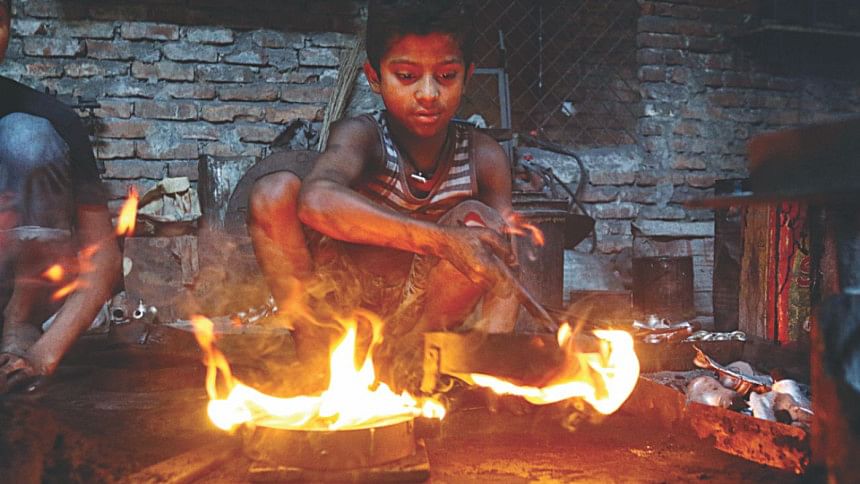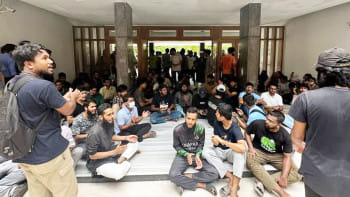Bid to weed out hazardous child labour by 2020

The government has taken up a Tk 284 crore project to lift one lakh children out of hazardous form of labour by 2020 with a view to brightening the country's image, said a top official of the labour ministry yesterday.
Under the self-funded project, 10,000 children will get Tk 10,000 each as initial capital for skills development and training, said Afroza Khan, secretary to the ministry.
Another mega project is also coming soon to rid 1.28 million children of hazardous labour by 2021, Khan said while addressing a workshop styled 'CLEAR exit strategy and way forward' at the capital's Bangabandhu International Conference Centre.
The ministry and International Labour Organisation jointly organised the workshop to share the findings of a study on child labour conducted under the ILO's Country Level Engagement and Assistance to Reduce (CLEAR) Child Labour project.
The government high-ups, ILO experts, local government representatives, representative from the US Department of Labour, non-governmental organisations and factory owners attended the workshop.
Some eight sectors have been identified as hazardous for those the age of 18, Khan said.
“They are not allowed to work there.”
The National Child Labour Elimination Policy 2010 and National Plan of Action are under implementation and in three phases some 90,000 children have been withdrawn from the hazardous form of child labour, Khan said.
The labour secretary also said the Department of Inspection for Factories and Establishments (DIFE) has already been empowered with the increase in the number of inspectors to 575 from 132 over the last few years.
Moreover, the number of field level officers of the DIFE has been increased to 23 now, she said.
In the last fiscal year, the deputy commissioners of 23 districts were instructed to motivate the factory owners in their respective districts to eliminate child labour, she said.
Previously, children under the age of 12 were also allowed to do light works, but the option has been withdrawn in the last amendment of the labour law.
Some 180 cases were filed against the factory owners due to the use of child labour over the last few years, Khan said. Between 2003 and 2013, the number of child labourers declined 46 percent to 1.7 million.
During the period, 3.3 million child labourers were identified. Of the number, 1.3 million were engaged in hazardous labour.
Still, there are 1.2 million children engaged in hazardous form of labour, she said, adding that the government is committed to eliminating hazardous form of child labour by 2021 and all forms of child labour by 2025.
One out of every six children in Bangladesh is working, according to a survey by Save the Children in 2014, said Nazneen Ahmed, senior research fellow of the Bangladesh Institute of Development Studies, who presented the findings of the study.
On average, the children work 39 hours a week and earn Tk 1,487.
About 1.21 million children in the age group of 14 to 17 years are working.
Only 19.6 percent of the children in the age group are currently attending school, Ahmed said.
Male child labour has gone down from 10 percent to 4 percent, she said. But the female child labour has gone up in hazardous form of work.
“The overall child labour has gone down and that is due to decline in male child labour,” Ahmed added.
However, Kamrul Anam, vice-chairman of the Workers Resource Centre, differed with the view, saying the number of child labour mentioned in the study is too high.
Bangladesh has successfully eliminated child labour from the garment sector a lot earlier, so the number is much lower than that mentioned in the study, he said.
“No children should have to enter work at an early age. Children should be at school. We hope that Bangladesh will take the necessary steps to ratify ILO convention 138 on minimum age,” said Tuomo Poutiainen, country director of ILO. Kazi Reazul Haque, chairman of the National Human Rights Commission, also spoke.

 For all latest news, follow The Daily Star's Google News channel.
For all latest news, follow The Daily Star's Google News channel. 



Comments